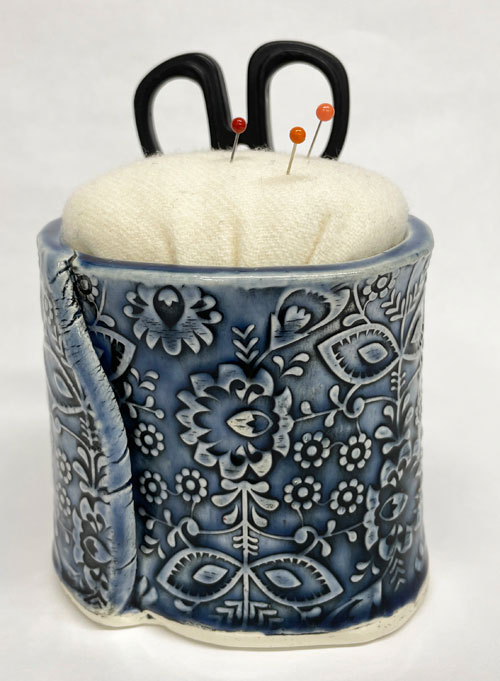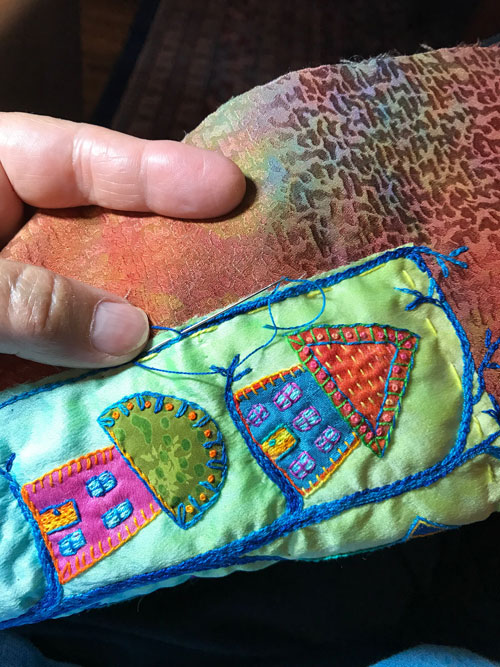Did you know I live a secret life? Yes, I am one of those crazy people exploring the mysterious world of ceramics.
Not ceramics made on a potter’s wheel. No, no no, I’m a hand builder. Once I tried throwing a pot on the wheel and the clay flew off and splattered all over the studio. Hand-building is safer for my fellow students.
Like other art forms you’ve probably explored, working with clay is like working with textiles. Both mediums let you create texture, and shape, and explore favorite themes like houses, birds, and trees. But most importantly for me, hand-building lets me improvise and create whimsical pieces like this tiny home with a hole in the roof for dried flowers.
Once in a while I make sewing related items like this handy pincushion with a loop for holding your small scissors. Now that you know about my secret life as a ceramicist maybe it’s time for you to explore other avenues of creativity too. Do you have an secret artistic life?







